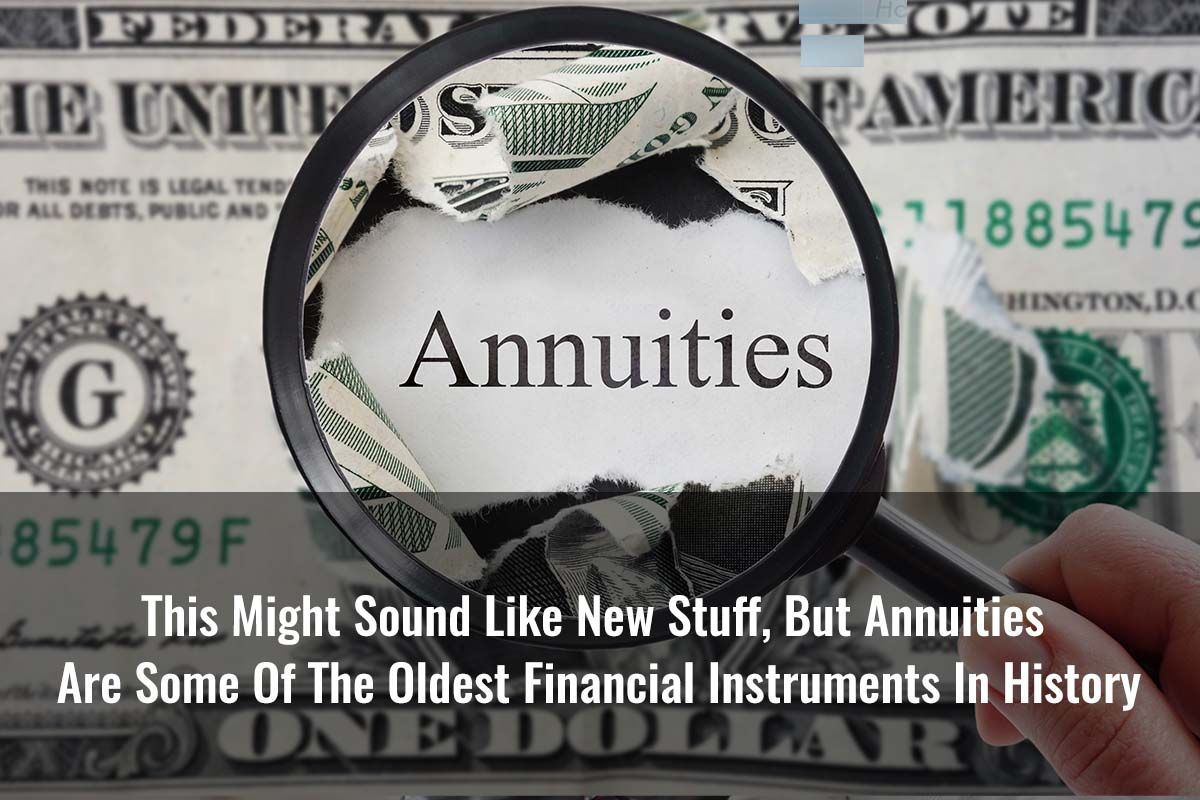
This Might Sound Like New Stuff, But Annuities Are Some Of The Oldest Financial Instruments In History
We believe the main definition associated with the word “annuity” should be “income.” Where did annuities come from, where did they originate?
The word annuity is believed to be derived from the Latin word “annua” – translated as “annual stipends.” The first annuity-like financial instrument in the world is believed to date back to 225 AD. If you can imagine back almost 2,000 years ago in Roman times, if you passed away and had assets, instead of leaving your beneficiaries lump sums of money, you might very well have left them income for as long as they lived. It seems like the Romans didn’t trust their kids with a big chunk of money any more than we do! This lifetime gifting of income practice created the need for the taxing authorities to quantify the amount of money that would ultimately be paid to beneficiaries.
A really smart guy by the name of Domitius Ulpianus, a Roman judge, was credited with creating the first mortality tables in 225 AD. Old Domitius is kind of like the first actuary. Domitius figured out how long the average Roman would live and then calculated each individual’s remaining life expectancy. Domitius then took this data and created what some say is the first annuity by calculating out how much income an individual would be paid per year based on age and amount of funds deposited.
The use of the annua continued on century after century, with individuals serving as “annua dealers” and even churches selling the lifetime payments to individuals. The first use of the annua concept by a government is thought to be the Dutch in the mid-16th century. The Dutch needed funds for war and other projects, and were paid lump sums of money by citizens, who in return received lifetime income from the Dutch government.
This fund-raising use by governments continued on into the 17th century, and the “tontine” was created. A government would collect money from a group of individuals, typically collecting the same amount from each individual, and would then pay each individual an annual income. As each individual owner of the tontine died; their share of the payments was distributed equally to the remaining living tontine owners. This continued on as each owner died, with survivors receiving larger and larger annual payments. The tontine was basically a combination of an annuity and the lottery.
Annuities first came to America in 1759 when Presbyterian ministers, as part of a group, were allowed to buy lifetime income from a fund established specifically for them. In 1812, over 200 years ago, the Pennsylvania Company for Insurance on Lives and Granting Annuities was formed as the first US company to offer annuities to individuals not part of a group.
In comparison, the first financial market type transactions in the world are thought to date back to the 1500’s, but for the purchase and sale of bonds, debt instruments, not stocks. In 1792, twenty-four (24) brokers and merchants got together in New York and formed an alliance to trade securities. Their relationship was documented in what was called the Buttonwood Agreement. It wasn’t until 1817 that the broker group from 1792 formed what was called the New York Stock & Exchange Board (NYS&EB).
In 1905, what is now known as TIAA-CREF was founded by Andrew Carnegie as the Teachers’ Pension Fund.
Up until 1928, the growth of the annuity industry was very slow, but the stock market crash of 1929 and the Great Depression found many people looking for guarantees. People worried about the stock market dropping 90%, no jobs, no food, and no hope. After the big stock market crash, annuities offered through insurance companies grew in popularity because there were not many other safe and secure investment options available, same as today.
In the 1500’s, some believe William Shakespeare was one of the first celebrity annuity-type buyers, reportedly investing significant funds into a transaction that would pay him income for his entire life.
In the 1700’s, it is believed some of the most prominent individuals who bought annuities included:
- Benjamin Franklin
- George Washington
- Beethoven
In modern times, a few notable purchasers of annuities include:
- Winston Churchill
- Babe Ruth
- Charles Schulz
- Jane Austen
- Ben Stein
- Ben Bernanke
- Shaquille O’Neal
The most important finding, or rather non-finding, based on our extensive study, discussions, and research of the history of fixed annuities, and fixed index annuities, is that no one has ever lost one dollar of guaranteed principal, guaranteed lifetime income, or guaranteed death benefits from
either investment losses in the stock market or insurance company failure, ever. Even if you had purchased a fixed annuity the day before the Great Depression, you would have been paid all the benefits guaranteed to you by the insurance company, throughout the Great Depression.
FIXED INDEX ANNUITIES WITH INCOME RIDERS WERE CREATED TO PROVIDE:
- Safety and security with principal protection against all stock market losses.
- An opportunity to earn a reasonable rate of return, without the chance of principal loss.
- Income for life for a single individual or a married couple.
- A low-fee (cost) alternative for retirement assets to provide long term security.
- The passing of all remaining assets to beneficiaries.
- A legally-binding and enforceable written contract explaining all the details of the rights, benefits, costs, and restrictions of the plan.
- Peace of mind – the ability to stop worrying about losses or running out of money during retirement.
By Dan Ahmad & Jim Files